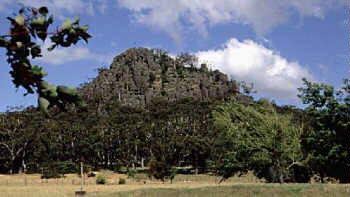Texts for analysis:
- Love and Other Catastrophes. (1996)
Director: Emma-Kate Croghan
- Picnic at Hanging Rock. (1975)
Director: Peter Weir
- A
Sunday too Far Away. (1975) Director: Ken Hannam
- Gallipoli. (1981) Director :
Peter Weir
- High Tide. (1988) Director : Gillian Armstrong
- Priscilla, Queen of the Desert. (1994)
Director: Stephan Elliot
|
Analytical approaches:
- Representation (i.e. gender, class, race, age)
- Narrative
(i.e structures and
categories)
- Iconography (i.e
notions of national landscape)
|
Representation:
The following questions may act as guides for analysis:
| Gender: What roles roles are given to/taken by male and female characters in this
film?
What is the film's attitude to sexual orientation? If any? |
How are these elements
generally treated in the average Hollywood, mainstream production? |
| Class: How are different classes signalled?
What are the ideas and values with which classes are
associated? (i.e. accent, money, housing, ethnicity, geographical location etc.)
How does class affect our view of character? |
How does class
generally figure in Hollywood, mainstream movies?
Are there any useful comparisons?
How might a Hollywood movie have told this story differently? |
| Race: Do different races play any part in this film? What are they
To what extent are they stereotyped? |
How far does this
conform to or differ from the average Hollywood production? Again think of useful
comparisons - especially where native american figures appear. |
| Age: What
ideas do old or young people stand for in this film?
Are elders, for example, repositories of wisdom and/or national
pride?
Do younger people, for example, represent a new beginning? |
How well does this
compare with the average Hollywood production?
It may be that this category - age - has a more international
application. What sort of national ideals and values do different ages represent? |
|
Narrative. Here are some basic questions to ask
yourself about each film:
In what ways is the narrative structured? Does it have a linear progression, driven
by character motivation along a logical trajectory punctuated by cause and effect?
Or is there a lack of logic? Is there even something mysterious about how and why
things happen? Do characters make things happen or do things happen to them?Is there a sense of closure? Are all the loose ends tied
up?
Does the outcome of the narrative support dominant
ideology? Are the bad guys caugtht and punished by the Law? Does everything
work out neatly in the end?
Can you assign a category to this film? Does it
fall neatly into ca ategory?
Do these conform to genres?
Are the films viewed no more than disguised westerns, thrillers, melodramas etc.? |
Iconography
An icon is a type of sign
that looks like what it signifies. Icons also carry associations.
| Is the image on the right
an icon? It carries associations, but when I asked my students what associations,
they connected budgerigars with old ladies. These look exactly like Joey, my
grandmother's budgie. Random, subjective associations are not what iconography
enjoys or encourages. Processes of iconography use existing power structures to
restrict and anchor associations of images. Though the
budgie is native to Australia - as is the Koala bear and duck-billed platypus - these
animals have not been institutionalised as has the emblematic kangaroo. |
 |
|
| But the
kangaroo is a ready-made icon - a cliché. One of the functions of Art is to create
iconic meanings. The picture below is of a place in Australia called Hanging Rock,
which Peter Weir makes iconic in his eponymous film. It is perhaps a measure of the
film's success that the two are so closely associated. 
|
Australian
Film Resources
Interview with Peter Wier (Sight & Sound 1976)
Peter Wier on Gallipoli (1981 Journal of Television and Film Quarterly)
Gallipoli
(A web site with images and music)
Oz Film Reading Room (Essays/ Dissertations/ Reviews) (Click on
'Oz Film' then 'Writings')
A Sunday too
Far Away (IMDb review)
Narrative Conventions in the Classical Hollywood Cinema (an essay)
|

